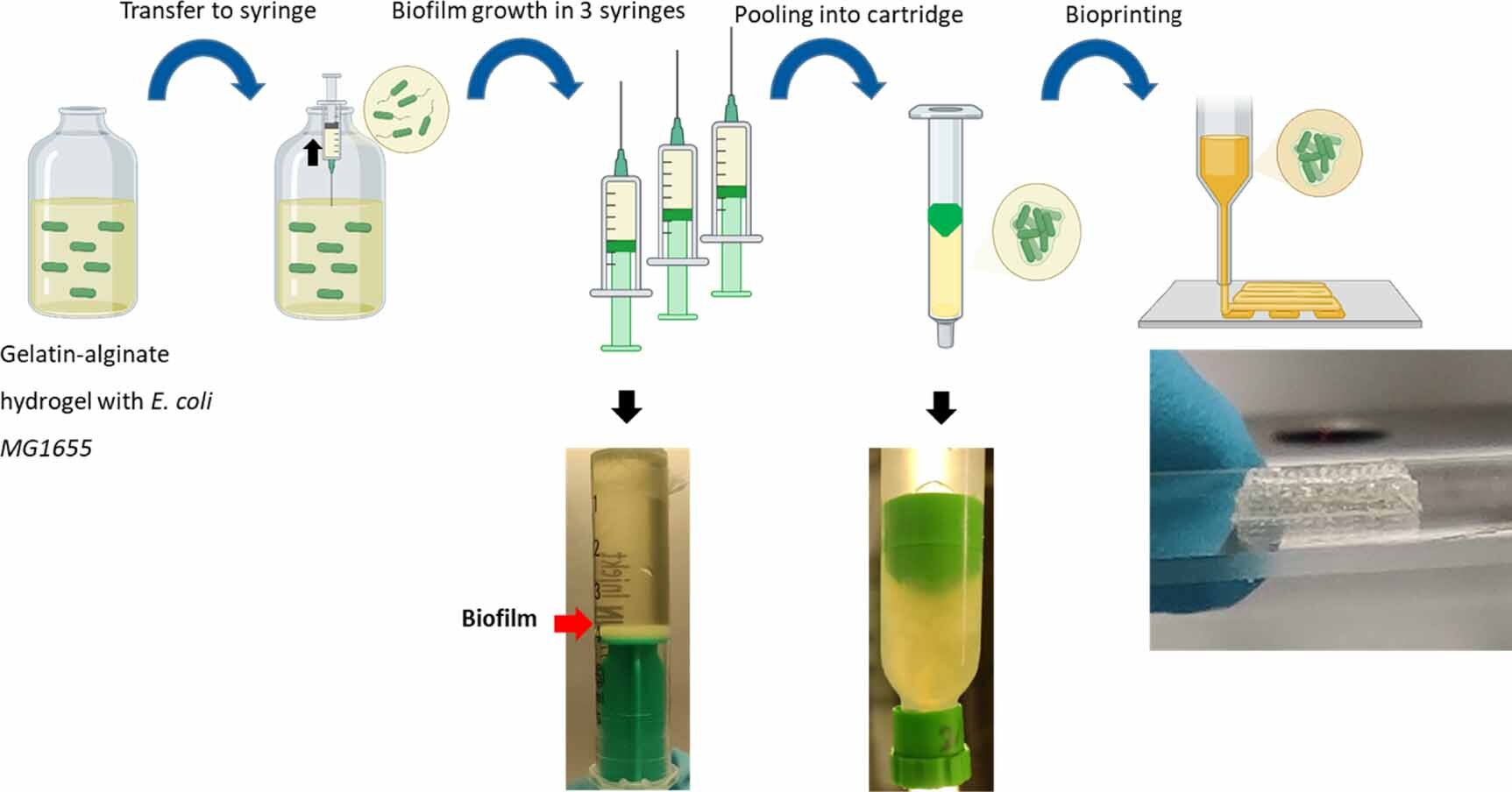Infections associated with biofilms claim the lives of over 500,000 individuals yearly as some bacterial pathogens form biofilms to shield themselves from drugs, or immune system cells. To improve the efficacy of current treatment options, the Helmholtz Institute for Pharmaceutical Research Saarland (HIPS) developed a novel bioprinting technique that permits biofilms to be grown on lung cells, facilitating improved analysis of infection processes and the development of new active substances to combat these diseases. Published in the journal Biofabrication, this innovative model system will offer scientists the opportunity to investigate biofilm-associated infections, even though such models are considered very complex due to the presence of additional elements such as human cells alongside human pathogens that need to be accurately simulated.
Laboratory models are a crucial tool utilized by scientists to study and simulate infection processes for the early testing and development of new active substances and to limit the number of necessary animal experiments. In the case of biofilm-associated infections, this model is considered very complex since another component is in play, requiring closer replication to the real system. To address this complexity, a team led by the head of the Department of Drug Delivery across Biological Barriers at HIPS and Professor of Biopharmacy and Pharmaceutical Technology at Saarland University, Claus-Michael Lehr, developed such a model system that efficiently places bacterial cells, including biofilm, onto an epithelial layer of lung cells using bioprinting. Developing this biofilm infection model required an ink with unique properties or features necessary to control or maintain its shape. Therefore, careful regulation of the system was important to prevent the rapid release of toxins that could cause the death of the lung cells. Clinical antibiotics were administered to test biofilm sensitivity with promising results obtained. This model system can effectively simulate several aspects of biofilm-associated infections, including morphology, antibiotic sensitivity, or changes in metabolism.
“Our method can now be used to analyze several aspects of a biofilm-associated infection at once, including morphology, antibiotic sensitivity, or changes in metabolism,” says Samy Aliyazdi, one of the researchers responsible for developing this innovative technique. “Using 3D bioprinting, we were able to generate a robust human-based in vitro model that we now plan to use for the development of novel anti-infectives.”
Additional Information:
Samy Aliyazdi et al, 3D bioprinting of E. coli MG1655 biofilms on human lung epithelial cells for building complex in vitro infection models, Biofabrication (2023). DOI: 10.1088/1758-5090/acd95e
Citation:
Researchers print bacterial biofilms on human lung cells to study chronic lung infections (2023, June 13)
retrieved 13 June 2023
from https://phys.org/news/2023-06-bacterial-biofilms-human-lung-cells.html
This document is subject to copyright. Apart from any fair dealing for the purpose of private study or research, no
part may be reproduced without written permission. The content is provided for information purposes only.
Denial of responsibility! TechCodex is an automatic aggregator of the all world’s media. In each content, the hyperlink to the primary source is specified. All trademarks belong to their rightful owners, and all materials to their authors. For any complaint, please reach us at – [email protected]. We will take necessary action within 24 hours.

Jessica Irvine is a tech enthusiast specializing in gadgets. From smart home devices to cutting-edge electronics, Jessica explores the world of consumer tech, offering readers comprehensive reviews, hands-on experiences, and expert insights into the coolest and most innovative gadgets on the market.


